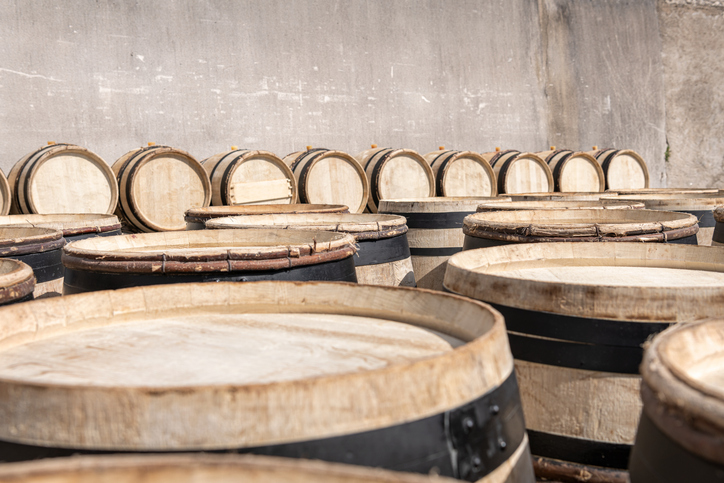Aging mead, or honey wine, is a captivating journey that intertwines ancient traditions with modern science. It’s an art form that evolves over time, blending time-honored techniques and personal taste to create unique, exquisite flavors. Whether you’re a seasoned mead enthusiast, an aspiring homebrewer, or a history buff intrigued by the lore of this age-old libation, understanding the nuances of mead aging can elevate your appreciation and skill.
The Science and Romance of Aging Mead
Aging mead enhances its desirable qualities and subdues any harsh or undesirable flavors. This transformation is not just about letting time pass; it’s about understanding the complex interplay between various factors and making informed choices to guide your mead toward its optimal flavor profile.
The Role of Oxidation
Oxidation is a double-edged sword in the world of mead. On one hand, it can introduce delightful, nuanced flavors; on the other hand, excessive oxidation can spoil the mead. When controlled, oxidation can add depth and complexity, contributing to a mead’s bouquet and mouthfeel.
- Positive Oxidation: When managed correctly, oxidation can enhance the mead’s character, adding sherry-like notes and smoothing out harsh flavors.
- Negative Oxidation: Uncontrolled oxidation can result in off-flavors and a loss of freshness. It is crucial to minimize exposure to oxygen during fermentation and aging, particularly during transfers and bottling.
Importance of Ingredient Choice
The quality and type of honey, the variety of yeast, and the adjunct ingredients (like fruits, spices, or herbs) play a critical role in the aging potential and ultimate flavor of the mead.
- Honey Varieties: Different honeys, from wildflower to clover to orange blossom, impart unique flavors that evolve distinctively over time. High-quality, raw honey is often preferred for its rich flavor and natural enzymes.
- Yeasts: Selecting the appropriate yeast strain can influence the aging process. Some yeasts contribute to a cleaner, crisper finish, while others may add complexity and depth.
- Adjuncts: Fruits, spices, and herbs can add layers of flavor that develop and meld together as the mead ages.
Oak Aging
Aging mead in oak barrels introduces another dimension of complexity. The wood imparts tannins, which can add structure and body, as well as subtle flavors of vanilla, caramel, and spice.
- Types of Oak: French oak tends to add subtle, nuanced flavors, while American oak can impart stronger, more robust notes. Hungarian oak offers a middle ground.
- Barrel Sizes: Smaller barrels accelerate the aging process due to the higher surface area-to-volume ratio, while larger barrels offer a slower, more gradual maturation.
- Toasting Levels: The level of toasting on the inside of the barrel influences the flavors imparted to the mead. Light toasting brings out more floral and fruity notes, while heavy toasting emphasizes caramel and smoky flavors.
Practical Tips for Aging Mead
Ideal Aging Conditions
Creating the right environment for aging is essential to ensure the mead develops as desired.
- Temperature: A consistent temperature between 55-65°F (13-18°C) is ideal. Fluctuations can cause the mead to expand and contract, potentially leading to oxidation.
- Humidity: Maintaining a relative humidity of around 70% helps to prevent the corks from drying out and allows for a slow, controlled aging process.
- Light: Mead should be stored away from direct sunlight, as UV rays can degrade the mead’s quality. Dark glass carboys or barrels, as well as storage in a dark location, are recommended.
Aging Techniques: Carboys, Barrels, and Bottles
- Carboys: Glass carboys are commonly used for aging mead before bottling. They offer the advantage of being inert, meaning they don’t impart any additional flavors.
- Barrels: Oak barrels can be used for part or all of the aging process. They allow for micro-oxidation and the infusion of oak flavors.
- Bottles: Once mead is bottled, it continues to age, albeit more slowly. Proper sealing and storage conditions are crucial to preserve its quality.
Influence of Personal Preferences, Alcohol Content, and Ingredients
- Personal Preferences: Whether you prefer a dry, semi-sweet, or sweet mead will guide your aging decisions. Tasting the mead periodically allows you to determine when it has reached its peak according to your palate.
- Alcohol Content: Higher alcohol meads generally require longer aging times to mellow and integrate the flavors harmoniously.
- Ingredients: The adjunct ingredients you use will also influence aging times. Fruit meads (melomels) may age differently than spiced meads (metheglins) or traditional meads made solely with honey, water, and yeast.
The Art and Science of Aging Mead
Aging mead is both an art and a science, melding tradition with personal discovery. By understanding the factors that influence the aging process—such as oxidation, ingredient choice, and oak aging—and following practical tips for ideal aging conditions, you can create a personalized taste experience that is richly rewarding.
As you embark on your mead aging journey, remember that patience is key. Allowing the mead to mature and evolve over time will enable the flavors to meld, mellow, and ultimately create a beverage that is a true reflection of your craftsmanship and taste preferences.
Unlock the secrets of aging mead, and enjoy the fruits of your labor in every bottle, each sip a testament to the passage of time and the mastery of this ancient art. Happy brewing!

